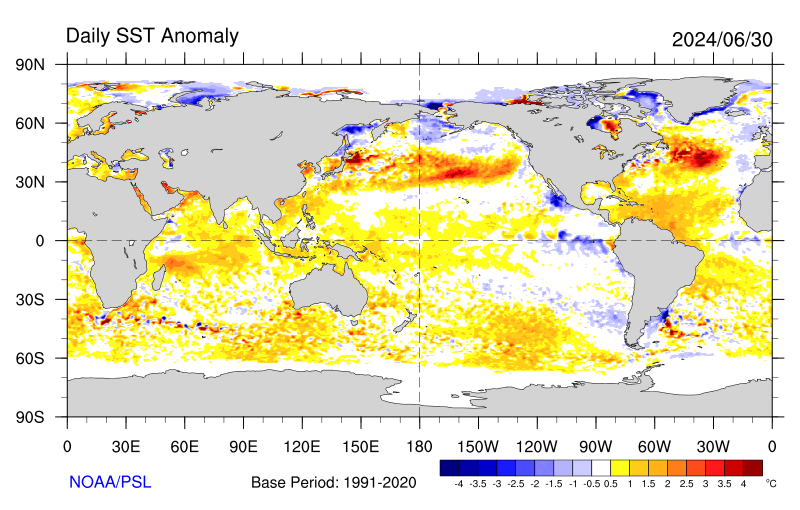This may read like a repeat of a prior article but it is not. It is simply that the situation has not really changed. On the second Thursday of every month, NOAA issues its analysis of the status of ENSO. This includes determining the Alert System Status. Although the current status remains the same i.e. La Nina Advisory, the forecast has been adjusted somewhat from last month. The forecast calls for the La Nina to continue. The timing is shown in the NOAA discussion and the IRI probability analysis. Of importance, the chances of a Triple Dip La Nina are not at all ruled out. That could be a real disaster for the Southwest and the West Coast.
The impact of the NOAA forecast for the slow or non-existent transition from La Nina to ENSO Neutral will show up next Thursday when NOAA issues its Seasonal Outlook. The NOAA ENSO Status Update provides an advance indication of how the Outlook might change. There is a lag between the ENSO state and the impact on U.S. weather. Thus the exact date when La Nina meets the criteria for ENSO Neutral may not be very important in terms of the actual impact on Spring and Summer weather including the North American Monsoon (NAM). We may see some changes farther out in the NOAA Outlook that will be issued next Thursday in particular Fall and Winter. But the possibility of a Triple Dip should be of considerable concern but it most likely will not be reflected in the Outlook issued next Thursday since it remains unlikely but possible. We will learn more about what NOAA thinks next Thursday.

CLIMATE PREDICTION CENTER ENSO DISCUSSION
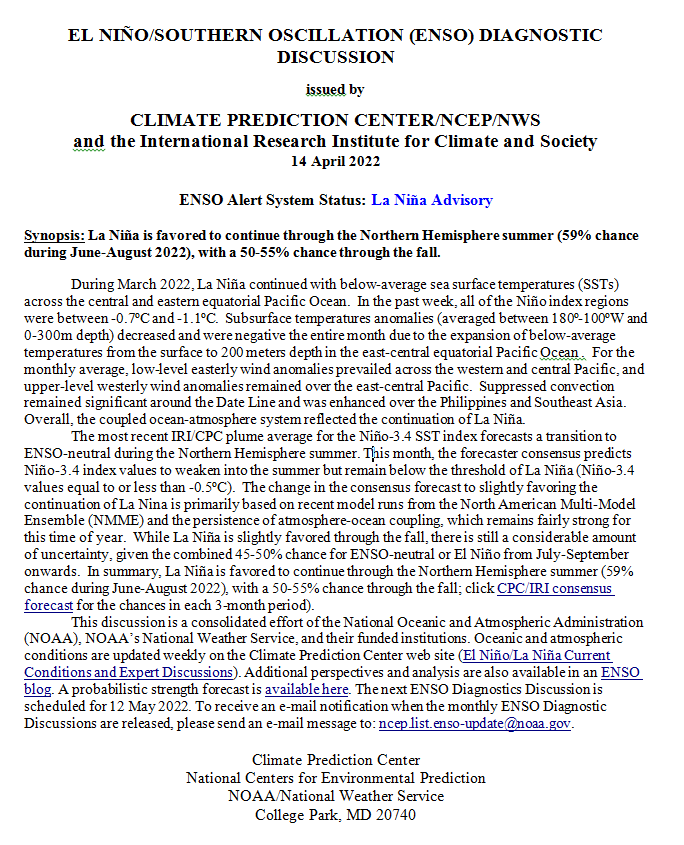
IRI CPC ENSO STATE Probability Distribution (IRI stands for the International Research Institute for Climate and Society)
Here are the new forecast probabilities. This information is released twice a month and the first release is based on a survey of Meteorologists. The probabilities are for three-month periods e.g. MAM stands for March/April/May.
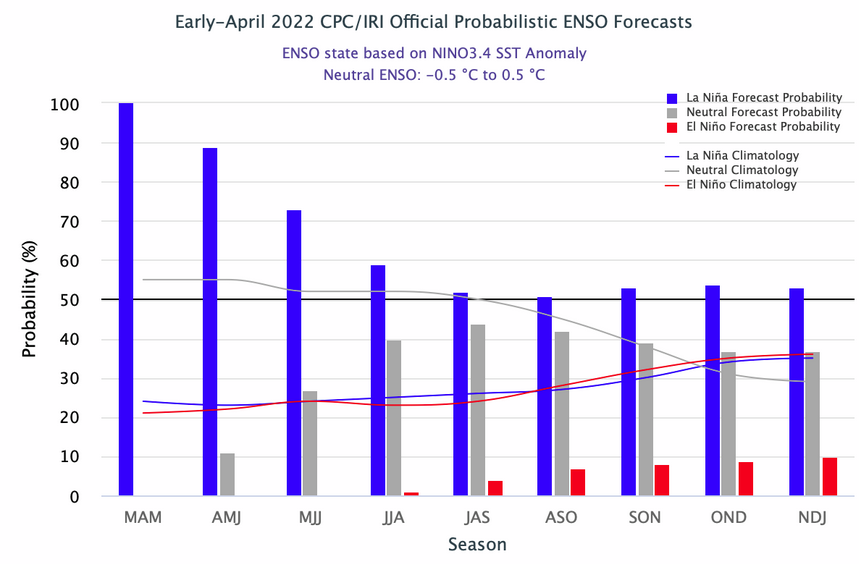
The wording in the Official Report talks about 50:50 going forward but the actual IRI forecast is pretty solidly favoring a continuation of La Nina.
Prior Analysis
Sometimes it is useful to compare the current forecast to prior forecasts. I have the forecast from the second half of March. That forecast is based on the computer model results from around the world. Thus there is a certain amount of comparing apples to oranges – But I think it is still very useful to compare the two forecasts. The early forecast for April is a big change from the Mid-March forecast. The methodology is not exactly the same. The current forecast is based on a summary of meteorologists. The prior forecast being the second forecast in that month is based on computer runs. But you can see the big change.

Looking Farther Back
You can see the pattern where the survey of meteorologists is more favorable to La Nina. But the difference between the two forecasts is more extreme this month than last month.

What Does the NOAA Proprietary ENSO Model Forecast?
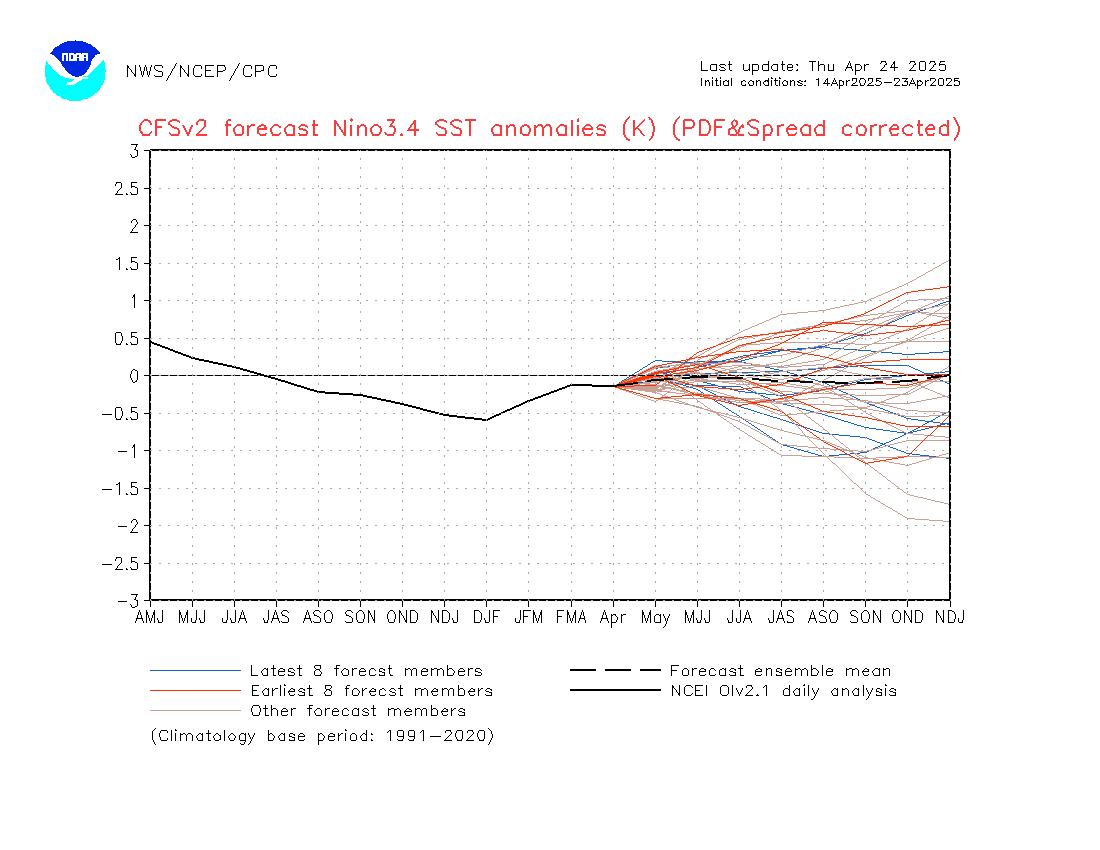
The above should auto-update. If it does not update you can click here https://www.cpc.ncep.noaa.gov/products/people/wwang/cfsv2fcst/images3/nino34SeaadjPDFSPRDC.gif This model shows La Nina continuing indefinitely. It has been showing that for some time but NOAA relies more on the IRI Forecast.
Derived Versus Actual
NOAA reports some derived data that describes the current situation and a forecast. But what if we want to form our own opinion? After all, meteorologists are looking at the actual current situation and making predictions.
This shows the current actual situation.
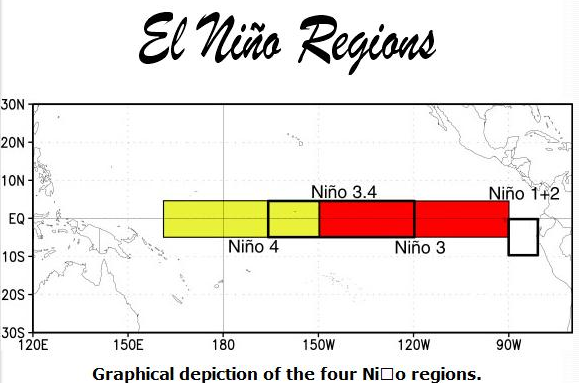
You can mentally superimpose the Nino 3.4 area shown encompassing part of the yellow and part of the red areas in the above map and you can see that it is cool in the Nino 3.4 area especially South of the Equator. That is an oddity of this La Nina that is both westerly displaced and focused mostly south of the Equator. There is not much discussion of that and how that might impact our weather.
One can also see that we remain in PDO-.
How About the Future?
ENSO is measured at the surface of the ocean because it is the surface that interacts with the atmosphere. But the surface changes over time so we pay a lot of attention to the subsurface. Here is what it looks like now. Does it look like it will soon be other than cool? It is complicated because we are looking at anomalies not absolute temperatures and we are only looking at a cross-section at the Equator when the Nino 3.4 Area extends five degrees north and south of the Equator but there is only so much information that can be presented in one graphic. Sea Surface Temperature Anomalies are only one component of ENSO but probably the most important component and La Nina is relative to SSTA is defined as -0.5C or colder.
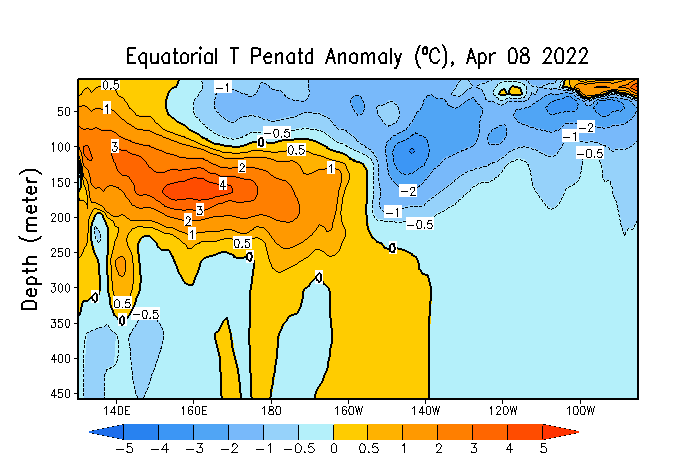
Here we are just looking at the Equator but from the surface down to 450 meters. And we are looking at the temperature anomalies. The Nino 3.4 Index is measured at the surface but the subsurface may become the future surface. There is anomalously cool water almost everywhere on the surface. Off to the west, the warm Indo-Pacific Warm Pool has receded but it is quite intense with maximum anomalies of 4 degrees Celsius. And we must remember that these anomalies are calculated based on the seasonal norms for water at that depth. So four degrees warmer than usual does not mean it is warmer than the water at the surface. So it will not automatically rise.
But let us look at the situation a month ago.
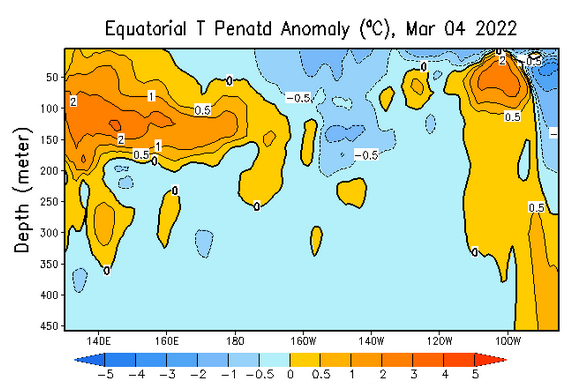
Last month it looked like the situation could quickly change. It does not look like that now.
I realize that is complicated. But it is important to understand. The analysis updates every five days but the graphics in this article are frozen. However, an updated version of this graphic can be found at https://www.cpc.ncep.noaa.gov/products/analysis_monitoring/ocean/weeklyenso_clim_81-10/wkteq_xz.gif. It comes with an upper graphic like the image shown above which is the temperature anomalies. It also has a lower graphic which is the actual water temperatures. Both are useful.
And this is what it looked like two months ago. There was a lot more warm water at depth but it is not there now.
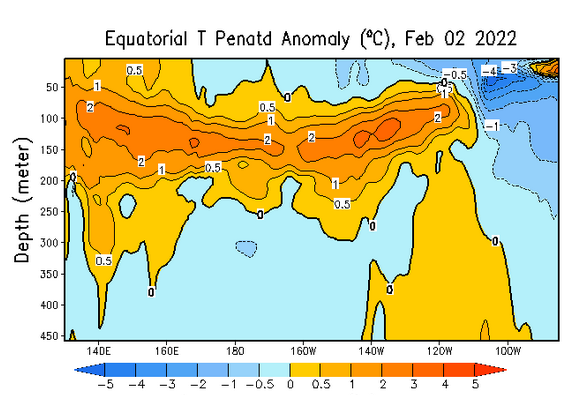
So in early January and early February, there had been a lot of progress in moving warmer water under the cool water and replacing it which explains the reduction of the intensity of the La Nina during those months. This suggested then that the IRI probabilities might be incorrect and the La Nina may be gone sooner rather than later. Now it looks like later rather than sooner.
Additional Information
Another way of looking at the situation is the impact of Oceanic Kelvin Waves.
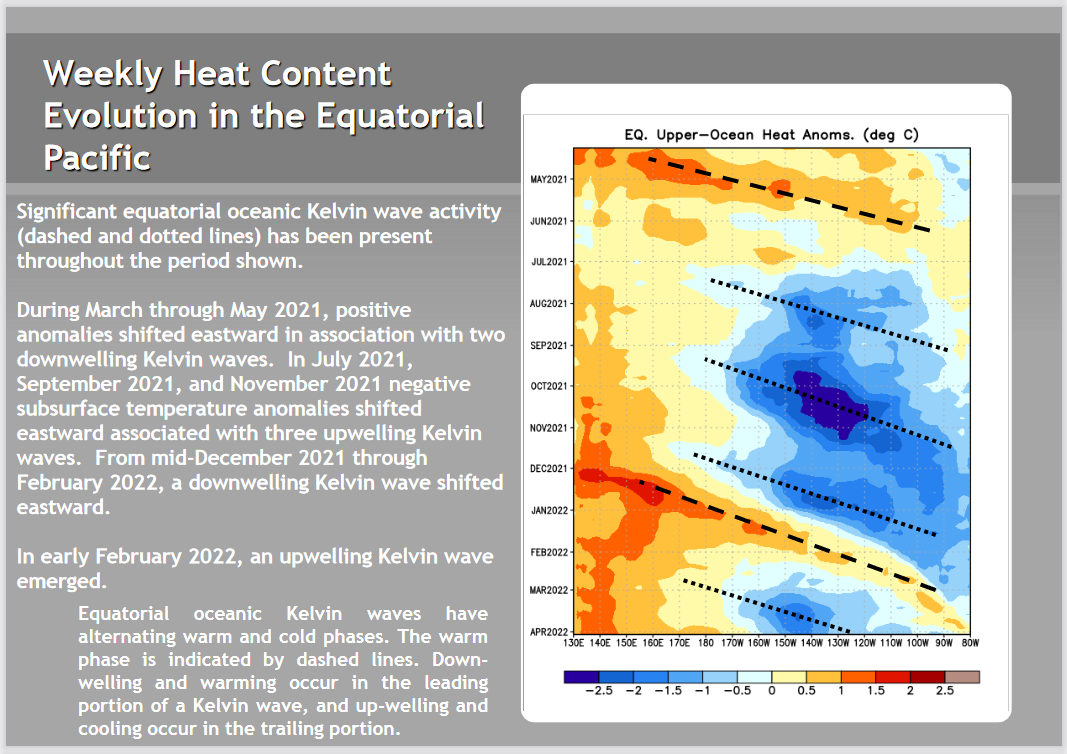
We described Oceanic Kelvin Waves in the article last month but let’s just say they are near-surface waves confined to the Equator which can move warm water east and help end a La Nina. The downwelling phase of such a wave is shown in red and the upwelling phase is shown in blue. The recent Kelvin Wave made it look more likely that we would transfer to ENSO Neutral. But it turned out to be a fairly weak Kelvin Wave not followed by another one although we might see one forming in this graphic. I checked some other information that I have not included in the article but it makes me think that we are not about to have a powerful Kelvin Wave. But time will tell.
My conclusion is we do not know yet when this La Nina will be over if ever. I take that back, La Nina can not persist forever but there could be a Triple Dip which would cause a lot of problems.
What Are the Chances of a Three-Peat?
We discussed that last month. But there was an interesting comment in the NOAA ENSO BLOG today which was written by Emily Becker.
As you can see from the graph, March 2022 was also tied for the coldest of the nine second-year La Niña events on record, for this time of year.
There is a graphic that explains it but I did not think it would reproduce well. You can find it and the full Blog article here. https://www.climate.gov/news-features/blogs/enso/april-2022-la-ni%C3%B1a-update-measuring#comment-6584
Impact of La Nina
I presented that information last month and you can find it in last month’s article at https://econcurrents.com/2022/03/12/enso-update-march-10-2022-la-nina-remains-and-if-anything-is-stronger/
